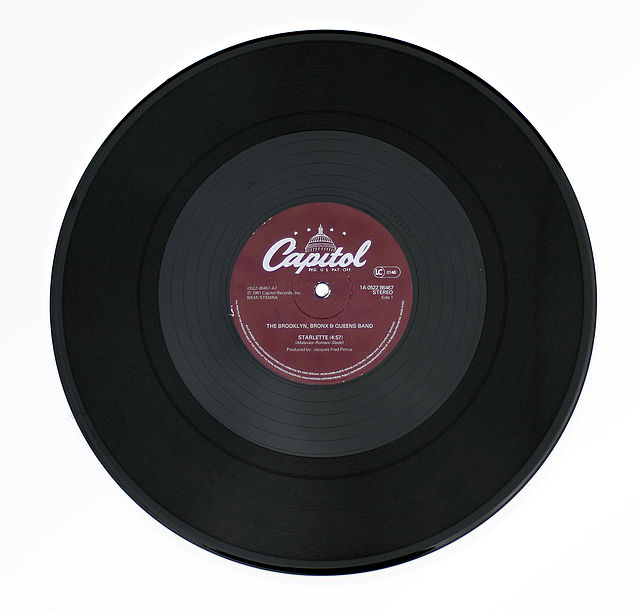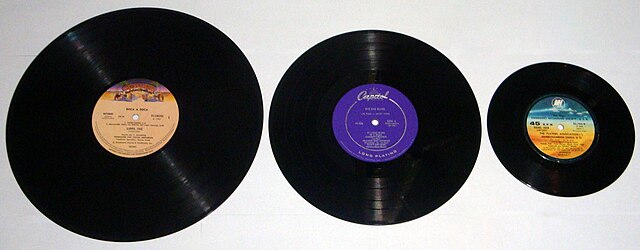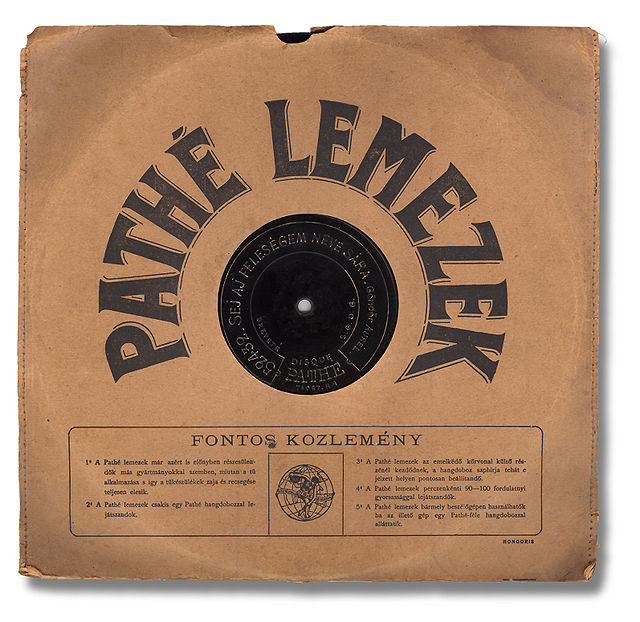The twelve-inch single is a type of vinyl gramophone record that has wider groove spacing and shorter playing time with a "single" or a few related sound tracks on each surface, compared to LPs which have several songs on each side. It is named for its 12-inch (300 mm) diameter. This allows for louder levels to be cut on the disc by the mastering engineer, which in turn gives a wider dynamic range, and thus better sound quality. This record type is commonly used in disco and dance music genres, where DJs use them to play in clubs. They are played at either 33+1⁄3 or 45 rpm. The conventional 7-inch single usually holds three or four minutes of music at full volume. The 12-inch LP sacrifices volume for extended playing time.
A twelve-inch Capitol Records gramophone record
Close-up shot of a 12-inch (30 cm) single showing the wide grooves
A phonograph record, a vinyl record, or simply a record or vinyl is an analog sound storage medium in the form of a flat disc with an inscribed, modulated spiral groove. The groove usually starts near the outside edge and ends near the center of the disc. The stored sound information is made audible by playing the record on a phonograph.
Three vinyl records of different formats, from left to right: a 12 inch LP, a 10 inch LP, a 7 inch single
Conductor and cast members of the D'Oyly Carte Opera Company with acoustic recording horn at HMV, c. 1924
Emile Berliner with disc record gramophone
Hungarian Pathé record, 90 to 100 rpm






